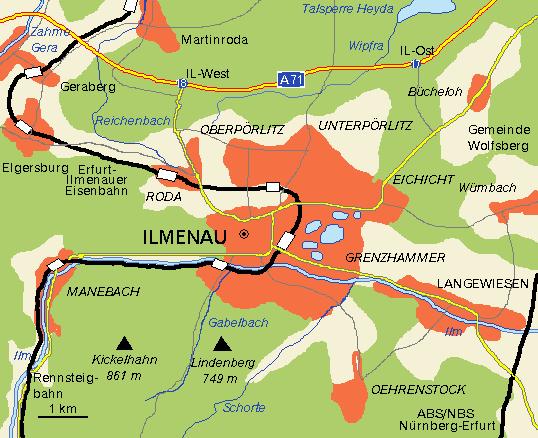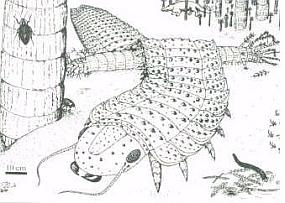Manebach EarthCache
-
Difficulty:
-

-
Terrain:
-

Size:  (not chosen)
(not chosen)
Please note Use of geocaching.com services is subject to the terms and conditions
in our disclaimer.
Ein Foto der location wäre super!!
a picture of the location would be nice!!!
Deutsche Version:
Steinkohle ist ein schwarzes, hartes, festes Sedimentgestein, das
durch Karbonisierung von Pflanzenresten (Inkohlung) entstand und zu
mehr als 50 Prozent des Gewichtes und mehr als 70 Prozent des
Volumens aus Kohlenstoff besteht. Damit handelt es sich um einen
Sammelbegriff für höherwertige Kohlen. Die Steinkohle wird auch
„Schwarzes Gold“ genannt. Sie ist ein fossiler
Energieträger und wird im Wesentlichen zur Stromerzeugung, zur
Wärmeerzeugung und zur Stahlproduktion genutzt.
Entstanden ist die Steinkohle aus großen Urwaldbeständen, die im
Prozess des Absterbens große Mengen Biomasse anhäuften, ähnlich wie
in einem Torfmoor zur heutigen Zeit. Diese Ablagerungen wurden
teilweise in regelmäßigen Abständen (deswegen gibt es im
Steinkohlebergbau meist mehrere Flöze) durch andere Sedimente wie
Tone und Sand/Sandsteine abgedeckt. Dadurch wurde das organische
Ausgangsmaterial unter Luftabschluss, hohem Druck und hohen
Temperaturen solange verdichtet und umgewandelt, bis ein fester
Verbund aus Kohlenstoff, Wasser und unbrennbaren Einschlüssen in
Form von Asche entstand.
Steinkohle zeichnet sich durch eine schwarze, feste Grundmasse aus,
in welcher mitunter Einschlüsse und Abdrücke prähistorischer
Pflanzen zu finden sind. Als eine Besonderheit Manebachs gelten die
zahlreichen Fundstellen fossiler Kräuterabdrücke aus dem Perm. Beim
Steinkohleabbau wurden die „Manebacher Fossilien“
(Pflanzenabdrücke von Farnen und Riesenschachtelhalmen) entdeckt.
Im Aufschluß stehen mehrere Steinkohlenflöze mit Wurzelböden im
liegenden und fossilreichen "Kräuterschiefer" im Hangenden an. Aus
dieser erdgeschichtlichen Zeit gibt es in Mitteleuropa nur diesen
einen natürlichen Übertage Aufschluß mit Steinkohlenflözen.


Um diesen Cache zu loggen sende die Antwort zu folgender
Frage
an meine email-Adresse (siehe mein Profil).
Welchem Tier, dass heute noch vorkommt, ähnelt der Fund in
Manebach?
Wie nennt man die Bildungszeit dieser Gesteine?
Logs ohne das die Antworten an meine email
gesandt wurden, werden gelöscht!
Es darf gleich geloggt werden, Antwortmail vom Owner nur bei
eventuellen Problemen...;)
English Version:
Hard coal is a black, hard, firm sedimentary rock,
which resulted from Karbonisierung of Plantrests (Inkohlung) and to
more than 50 per cent of the weight and more than 70 per cent of
the volume consists of carbon. With it concerns a comprehensive
term for coals with high order. The hard coal is called also
„black gold “. It is a fossil source of energy and for
generation of current, for heat production and for steel production
is essentially used.
Main time of origin of the hard coal is the carbon. Developed it
from large jungle existence, which accumulated large quantities of
biomass during the process of dying, similarly as in a peat bog at
the today's time. These deposits were partly covered in regular
intervals (therefore there are several seams in the hard coal
mining industry usually) by other sediments such as clay/tone and
sand/sandstones. Thus the organic raw material under air
conclusion, high pressure and high temperatures was consolidated
and converted until a firm group from carbon, water and flame
resistant inclusions developed in the form of ashes.
Hard coal is characterised by black, firm basic dimensions, in
which every now and then inclusions and castings of prähistorischer
plants are to be found As a characteristic of one brook the
numerous places of discovery of fossil herb castings from the
Permian are considered. With the hard coal dismantling „the
Manebacher fossils “(plant castings of ferns and giant box
stems) was discovered. In the explanation several Steinkohlenflöze
with root grounds in the lying and fossil-rich stand
"Kräuterschiefer" in slope ends on. The education formation of
these rocks is mentioned the frontier carbon/Permian (approx. 296
millions years old) also lower red-lying. From this earth-history
time there are in Central Europe only these natural over days an
explanation with Steinkohlenflözen. One brook in the Ilmtal is the
birth place of the PALÄOBOTANIK - the theory of the fossil plants.
Only important occurrence Central Europe, is scientifically
observed here, collected for approx. 300 years and researches. 1695
discovered the mine entrepreneur F. Heyn very well received plants
from the Permian, predominantly ferns and box stems.
To log the Cache please send the answer of the following
questions to my e-mail address
(check my profile).
Which animal that today still occurs, does the find in one brook
resemble?
How does one call the education formation of these rocks?
Logs without sending the answers to my email
will be deleted!
You can log your visit directly, ownermail only if there are any
problems!!!
Additional Hints
(No hints available.)